Don't wanna be here? Send us removal request.
Text
OPortunities of EDucation in Cultural Sensitivity
We have all experienced the frustration that comes along with using modern technology. Whether it be your computer freezing, your phone not connecting to Wi-Fi, or your grandma’s hacked Facebook account sending you invitations to play buggy, irrelevant games, we’ve all been there. And while so much of our everyday lives revolve around that technology working, there are times in which each of us take a hit due to a “bug.” From this, it may seem like suddenly, now that we all so heavily rely on these planned-obsolescent luxuries, we should be able to use a “computer crash” or a “hacked account” to cover up those days where we just miss the mark. This “my dog ate my computer” mentality is received quite comically, from students to landlords, and it’s in your best interest to just come forward and say that you messed up, rather than “blame it on the CPU.” If only someone told Dolce & Gabbana this.
Slated for November 21st, the annual China fashion show by the luxury fashion brand, founded in 1985 by Italian designers Domenico Dolce and Stefano Gabbana, was set to take place in Shanghai. As a way to promote the show, they released a set of “chopstick eating” videos, where well-known Chinese models were shown jokingly attempting to eat Italian food with chopsticks, and failing to do so, which read as being done in truly bad taste. D&G’s “The Great Show” was officially cancelled, largely due to the fact that both models and their agents were refusing to take part in a show that clearly was not created in a respectful manner for the target audience.
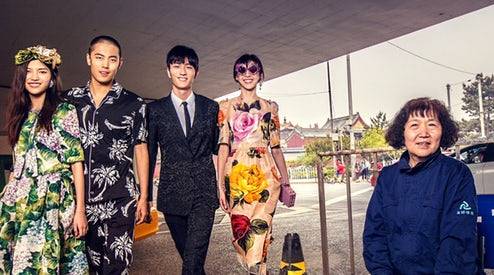
The promotional videos were wiped clean from D&G’s global social media accounts, which could have worked for them in earlier stages of the internet. Thanks to the fashion crusaders that are @diet_prada, two fashion aficionados that have gained an incredibly large following through calling out copycats and other misdoings within the fashion industry, we are still able to view one of these videos, where a female model is seemingly “taught” how to eat traditional Italian food with chopsticks the “right” way. According to McKinsey, Chinese luxury consumers accounted for over $7.4 billion in 2018, so of course Dolce & Gabbana would want to tap into those profitable markets. Sadly (for them), it looks like they won’t be able to do that, and hopefully (for the rest of the luxury fashion consumer market) this will light the flame for responsible marketing efforts for the future.
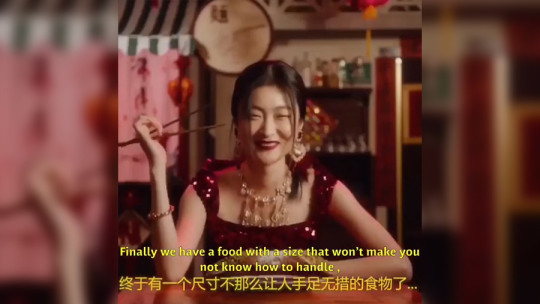
What makes this unfortunate event even worse is, also thanks to @diet_prada, how founder Stefano Gabbana was not shy to disclose his racist opinions on China as a culture. Direct Message screenshots between him and Dieter (what @ diet_prada has nicknamed their fans/supporters) @michaelatranova showed how he really felt, particularly one message stating “China Ignorant Dirty Smelling Mafia,” and that the deletion of the posts was not something he was supportive of. While there is clearly disconnect between the executives behind the brand and what is put out into the world, both made terrible mistakes with this marketing tactic.
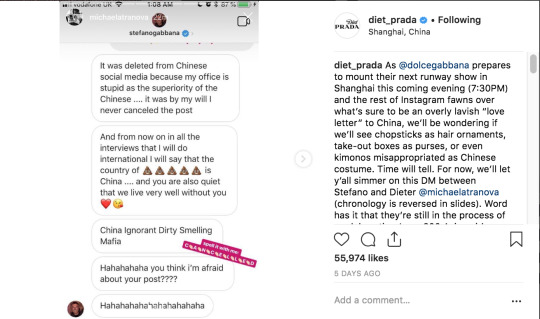
Whether or not people see the apology video put out on Dolce & Gabbana’s twitter, I don’t see them recovering well from this. Nowadays, so many people are now paying attention to the ethics of brands, rather than blindly purchasing based off of aesthetics and trends. This “cancellation” that has begun around the brand is unfortunate, but in all honesty, is a step in the right direction. Customers should utilize their voices and purchasing power to make change in the industries that aim to represent them, particularly when these representations areas so offensive. It’s confusing how such an established brand could make such a detrimental move without realizing how culturally insensitive it is, but perhaps some ethics education is in order at D&G.
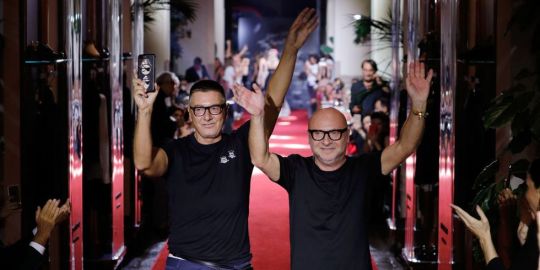
Other sources utilized: https://thefederalist.com/2018/11/26/china-freaked-dolce-gabbanas-dg-loves-china-campaign/ • https://www.harpersbazaar.com/fashion/designers/a25252684/dolce-and-gabbana-shanghai-show-canceled-china-instagram/ •
0 notes
Text
The Beginning of Quality Quantitative Data
When it comes to quantitative data concerning diversity and inclusivity within the fashion/advertising industries, easily attainable statistical analyses commonly depict the different demographic groups that are included within them. Now, upon looking closer at these statistics, it is not uncommon to see them discussing how tokenized this show seemed with a sole black model included (or still none at all), how that show didn’t include more than one body type, etc. - lots of “firsts” and “only one”s. Every year, it seems we gain a new “[most recent season] was the most diverse runway season we’ve seen yet;” this is amazing, but for me, I feel as though we still need to make improvements until this is no longer a headline, where all different types of minority groups are represented throughout all marketing efforts. If this includes new quantitative reports emerging from websites like The Fashion Spot every concurrent season, then bring it on.
This would not be a complete white page on diversity without some statistics on different makeups of the US. Here are some initial graphs detailing racial makeup, overweight statistics, and disability statistics.
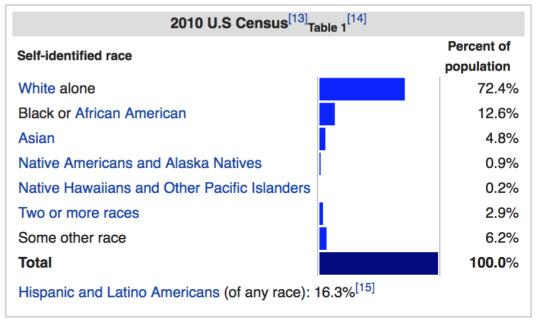
(taken from: https://en.wikipedia.org/wiki/Race_and_ethnicity_in_the_United_States)
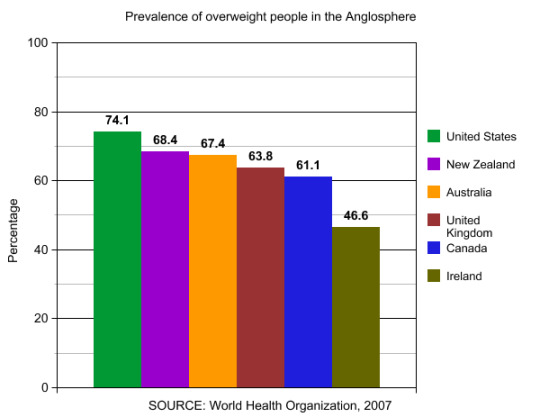
(taken from: https://en.wikipedia.org/wiki/Obesity_in_the_United_States#Prevalence)
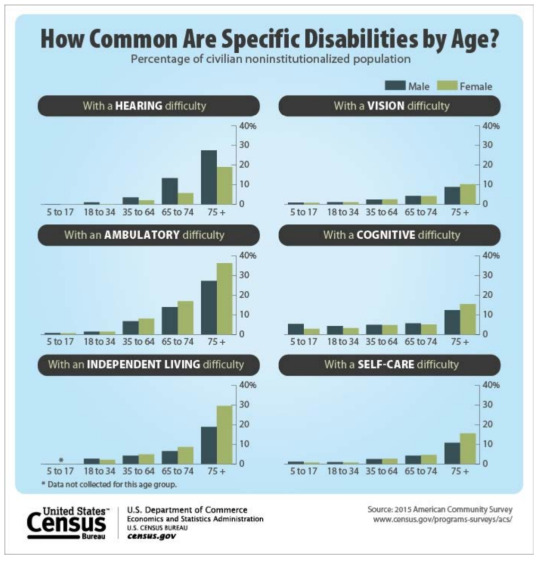
(taken from: https://disabilitycompendium.org/sites/default/files/user-uploads/Events/Comp2017Presentations/danielle-taylor-2.13.18.pdf)
Clearly, the United States, as well as the rest of the world, is not made up of one specific body type: utilizing quantitative data analyses make this very evident. These can (and in my opinion, SHOULD) be referenced through the casting and design processes that go into runway shows. Unfortunately, some do not think so.

Since the 2018 Victoria’s Secret Fashion Show was just filmed last week, I’d like to delve further into a brand that I’ve discussed in the past, that being Rihanna’s Fenty Beauty. Rihanna’s conglomerate makeup/lingerie/all-over amazing brand making milestones in regards to both racial and body type diversity had an incredible (what I’d consider to be a one-upping) lingerie fashion show for Fall/Winter 2018, of which models of every shape and size walked the runway. What I find comical is how she performed during the 2012 VS Fashion Show, and how she has clearly come to realize that that same show is what she’d want to create an antithesis to. The Victoria’s Secret Fashion Show is known to include one female body type: tall, skinny, and traditionally “gorgeous.” Victoria’s secret has been criticized for this on numerous occasions, and it is clear that a lot of statistical analyses of their shows may do okaaay within racial categories, they do not include plus-size models, trans models, models with disabilities, etc. VS marketing forces have said that this is because this show exists as a “fantasy.” So in that case, they’re justified, right? While certain statistics show that the shows are sequentially (and slowly gradually) progressing racially each year, their numbers aren’t the most optimistic.
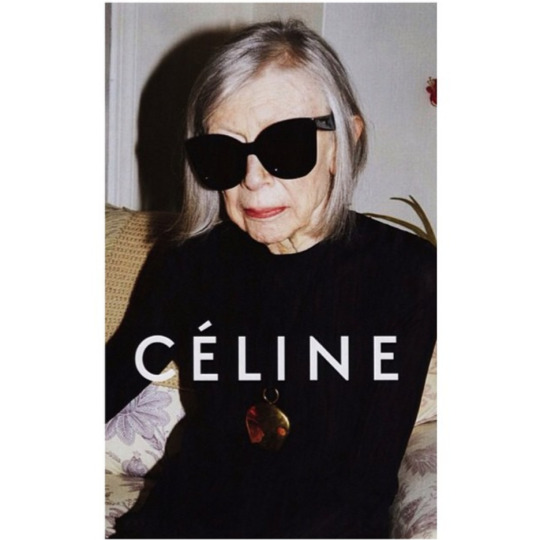
Discussing numbers in reference to humans would be incomplete without taking into consideration the qualitative way we label ourselves practically every day, that label being age. Runways are becoming more timeless: they are (ethically, thankfully) including models on both extreme sides of the age spectrum. This inclusivity is truly important when it comes to purchasing power and possible profits for the fashion industry. The human body is constantly changing size, and so clothing purchase is necessary throughout the entirety of life; why target just the young in terms of purchasing power.
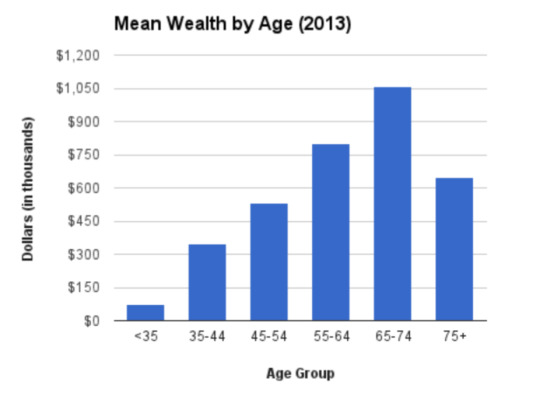
(Taken from: https://www.demos.org/blog/9/8/14/wealth-distributed-extremely-unevenly-within-every-age-group)
While the young may seem to purchase more frequently, the money comes with the mature. Dismissing this fact could be incredibly irresponsible and dismissive of possible profit (for once, speaking business-wise).
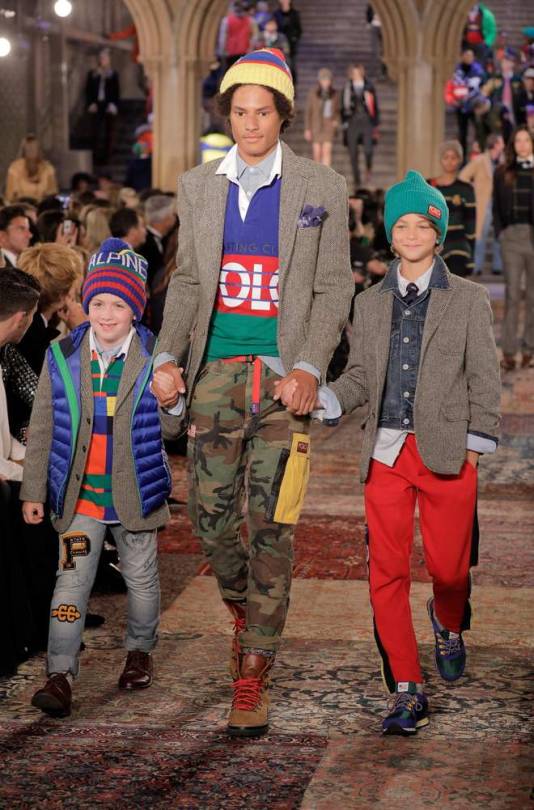
Benefits that could come from more diverse runway shows are numerous. Seeing someone that you can identify as similar to you, whether that be in age, body size, sexuality, age, or ability is incredibly powerful. To see a brand making decisions to accommodate all positions them as global thinkers; you don’t have to search long and hard, even within the political sphere, to find instances in which this is not considered. Quantitative studies within the fashion/advertising industry help consumers become more knowledgeable concerning who to put their purchasing power behind, in a world where brand ethics are just as important as brand offerings. Closed-mindedness is a trait of the past; it’s time everyone truly started realizing this.
0 notes
Text
Out in the Universe, Checking in on New Standards
While it’s definitely interesting to sit at a computer and be able to pour over many different examples of brands beginning to act more progressively concerning the diverse individuals they begin to include into their marketing efforts, nothing beats coming across one of these efforts in person. I figured that I would put my ethnographic research planning to the test, and I so went with the observations from my previous post as to what I would be studying.
As stated before, I got in touch with Universal Standard, the label whose ad I was following. They informed me of a whopping 16 ad placements around New York City. Based off of their list, I figured that for a day’s trip, three sites would be a nice size to survey. As stated within my last post, I wanted to be able to choose locations that would garner different audience reactions, and so the three sites that I chose to visit were Midtown, just blocks away from Time Square, specifically 249 West 43rd Street. I visited this ad in the morning of November 2nd, 2018, because I knew that I would likely have the largest portion of people to observe. I was absolutely right in thinking this, particularly because this portion of the city is an interesting mix of bustling businessmen and tourists. Since I knew that the day would include lots of rain, I made sure to use this ad as my primary study location.
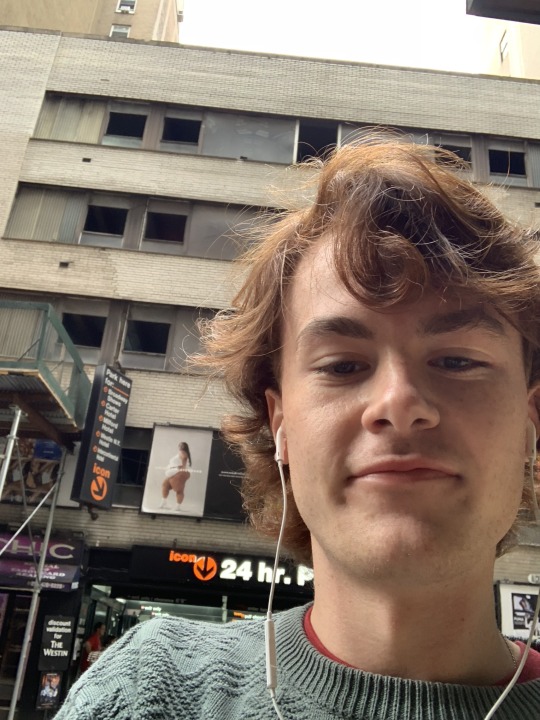

In terms of ad placement in relation to street level, it is crucial to note that this ad was located above a garage entrance, and not on sidewalk level. This could likely be due to the fact that this area would be more expensive to post advertisements in, and a higher, smaller ad in such a busy area would do in terms of at least providing visibility within this neighborhood. Because of this placement, there weren’t an large portion of people actually looking at the ad, but when they did, they all seemed to scan and move forward. Other ads around this one included clothing ads, a few being for Puma. I found that the reactions I saw towards the ad were not what I expected them to be, in that as I wrote out my plan for my ethnography, I expected to see more “interaction” in the context of the ad, but with this being New York, most people were just walking past and not stopping to talk/take pictures of ads. This somewhat carried into the other sites that I visited.
The other two ads that I went to were posted in SoHo at 333 Lafayette Street and in Brooklyn’s East Williamsburg at 251 Montrose Avenue . While I chose these two with the understanding that their audiences may both be younger, more liberally-minded, I had an audience differentiation in mind. SoHo is the main fashion district within New York, while Brooklyn is a more residential area. And so with this, I was able to see something different that I hadn’t in Midtown. On Lafayette, people passing the ad shared the same hustle and bustle, but the ad itself was a larger print, and was placed more at sidewalk level. This ad experienced many more glances from those passing, and this may be due to the fact that people within this area are more accustomed to looking around, seeing what people are wearing, and are likely to pay more attention to advertisements, due to the fact that they could inspire more clothing choices or style trends.
At 251 Montrose, there weren’t many people passing by in general, and so observations were significantly fewer, and yet here was where I saw an emotional response. I saw an individual take a photo of the ad, which gave me the idea to post one of the images I took onto my Instagram story and tag both Universal Standard and La’Shaunae Steward. This sharing of the ad showed how this ad is making an impact in its shareability, where other ads may be pushing visuals of women in undergarments, yet this depiction shows a less-represented group of women. Upon sharing my image, both Universal Standard as well as La’Shaunae Steward actually responded to the post through a direct message, which shows that they are not only putting their work out into the world to reach the masses, but also are reaching out and supporting those that are supporting them. I saw this to be incredibly telling of how the fashion industry is becoming a system of checks and balances, and how mutual support is fostering a more accepting and progressive thought process in both marketing work but also clothing production.
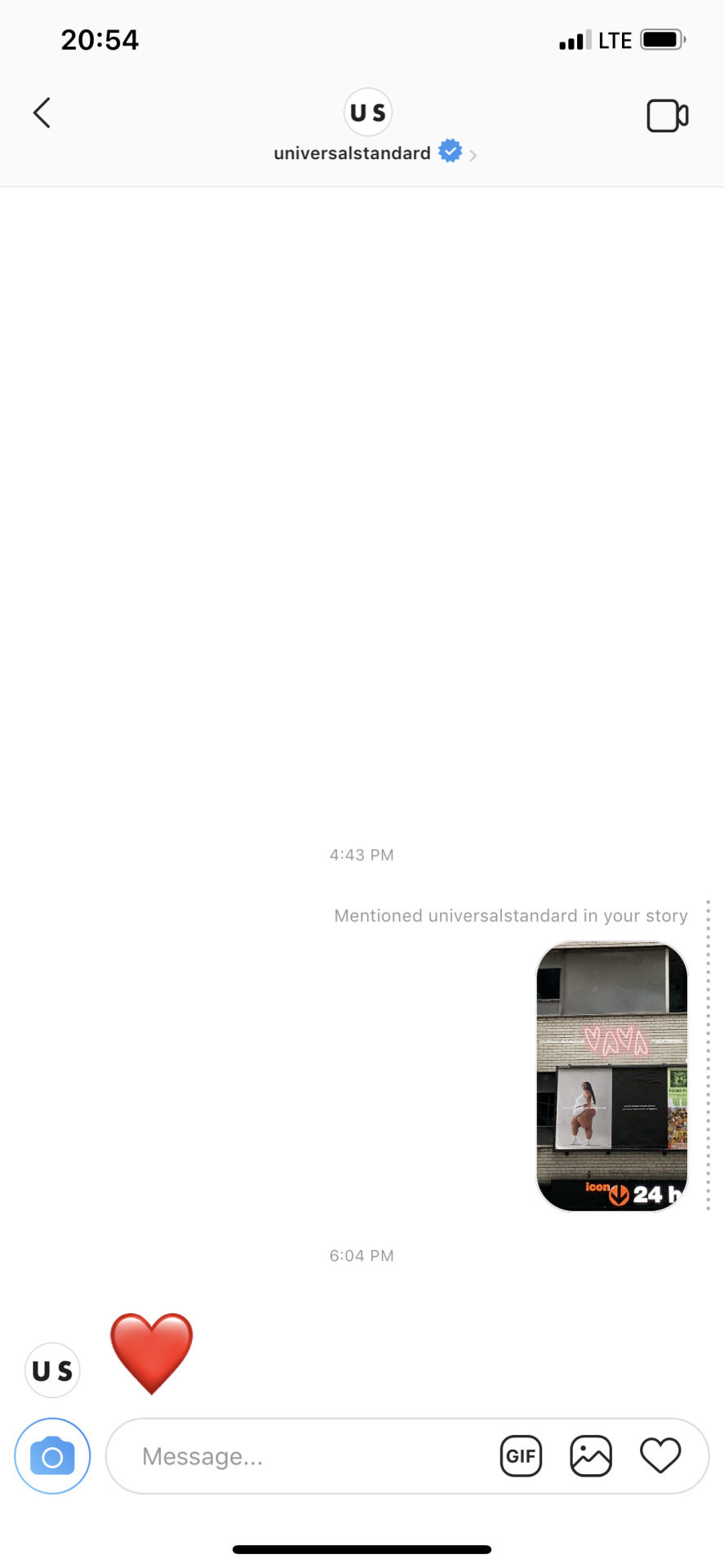
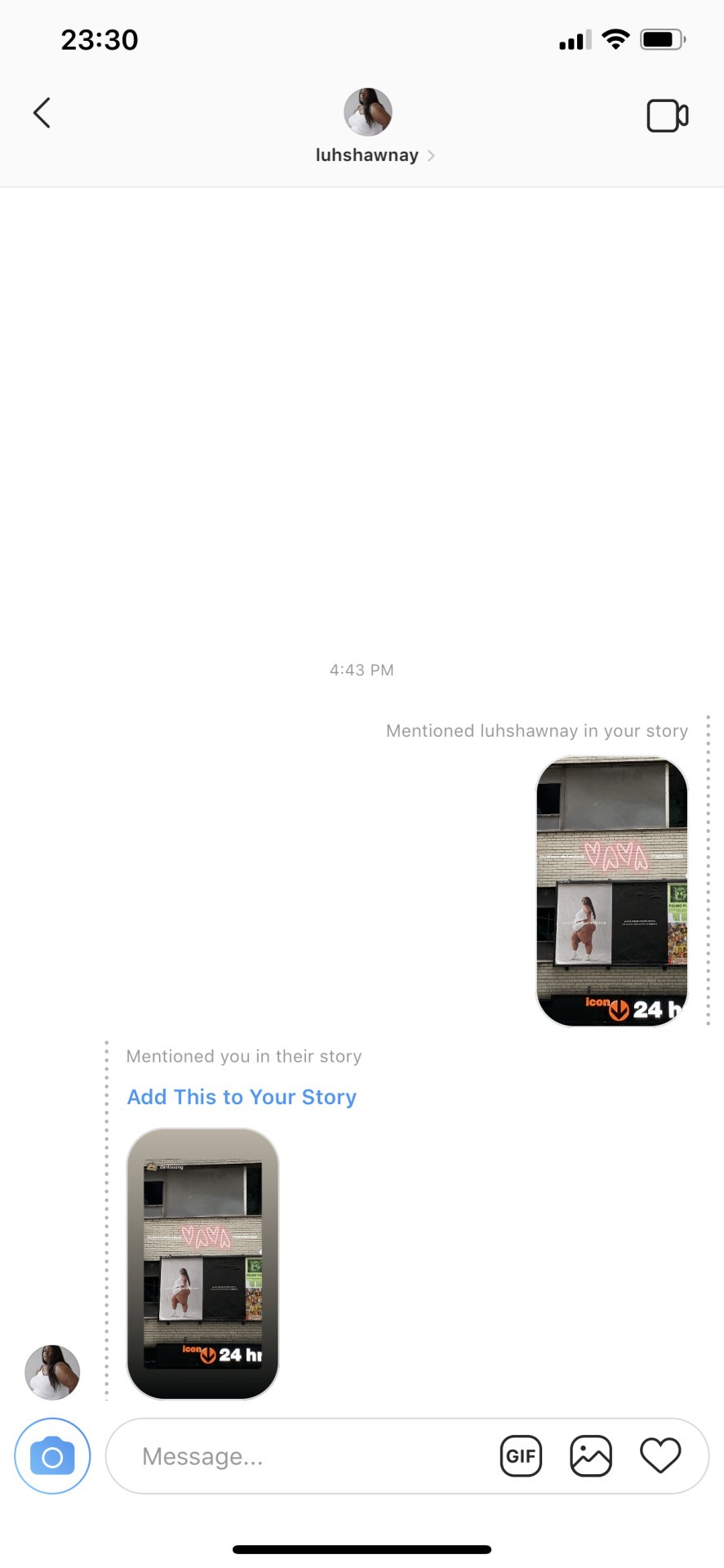
0 notes
Text
Out and About
I would like to track down a specific print ad that I saw teased by a model that I follow on Instagram and conduct an ethnographic study there. The image includes model La-Shaunae Steward, in a three-piece white undergarment set. La-Shaunae would be classified as a plus-sized model of color, and I find that her ad for Universal Standard, a women’s clothing label centering its work on providing clothing for individuals within the sizes 6 to 32, would be a perfect intersectional example of what I would love to see more within fashion and advertising. With Steward posting this campaign photo on her Instagram (both the final proof as well as a street shot), alongside Universal Standard themselves, I think that the campaign is currently running within New York City. I have emailed their team in hopes that I will be able to gain information as to where the campaign may be posted, because I would love to travel to New York (or wherever the campaign is) to conduct this study.
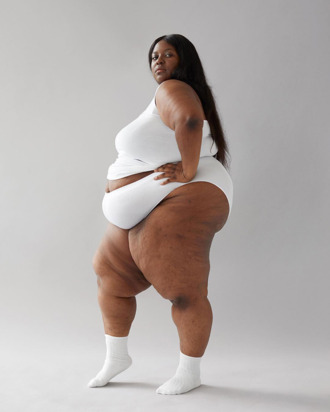
For this ethnographic study to work, I understand that I would have to find a place in which I would be able to “stake out” and observe passing individuals in a way that was not obvious. I would go about this study in search of data concerning people looking at the ad, people stopping to look at the ad, possibly looking the ad up, or any different facial expressions made after looking at the ad. Depending on where the ad is (that being, if I am able to find one), I would figure out an appropriate time frame to make my observations. I would try and maximize this, and so I could see myself stationed for at least an hour.
I would initially scope out the area in which the ad was placed, as a way of getting insight into the campaign goal. I would look at surrounding stores, conveniences, etc. Besides this, I would primarily look at the demographic makeup of the passersby. I would want to see if this ad is posted in an at-a-glance diverse area or not.
Upon writing this assignment, I have received correspondence from Universal Standard, including a compiled list of all their ad locations throughout New York City. So that I do not miss an opportunity to see this ad, I hope to spend an upcoming Saturday in New York, possibly completing this study a few times over to see what each site is like and how they differ.
While observational statistics like this may be hard to do from a place of limited experience, I would attempt to categorize my observation options to the best of my ability. Here’s what I can see myself looking for initially: 1) Location details: - Where in New York is the ad? Is this an affluent area? - What stores/restaurants/attractions are around? - Is this a busy area? Is on-foot or car traffic more prevalent? 2) Physical ad status: - Is the ad high up or around eye level? - Is the ad dirty/clean/vandalized? - What other ads are around?
3) Audience details: - Are people looking at the ad? Are they simply glancing at the ad, or are they making prolonged eye contact with the ad? Stopping to look at the ad? - Can I hear the observers saying anything about the ad? - What may be some demographics of the people looking at the ad? - What are observers wearing themselves? - Do any observers make emotion-based physical reactions to the ad? Facial expressions of happiness/dissatisfaction/confusion?
I see this as an exciting opportunity to get out into the field and see what people’s innate responses to advertisements may be. Print advertising is so interesting, in that it is something that may take people’s eyes off of their phones momentarily, something that is not easily done nowadays. If I were to be asked about what I am doing, since I will likely have paper out for note-taking, I would be excited to have conversations concerning ads like this, and whether or not these individuals have any pressing opinions on the topic.
Here’s an interview with La’Shaunae Steward and one with Alex Waldman, half of the design team behind Universal Standard.
0 notes
Text
Serving Glamour and BodIES
Through reading Jane Addams’ “Recreation as a Public Function in Urban Communities,” I found one particular paragraph focusing in on diversity that resonated with me and my interests in inclusivity within the fashion and advertising industries. She wrote that “a city is made up of an infinitely varying multitude, working their way, through much pain and confusion, toward juster human relations, which are indeed the ideal political relations” (Addams, pg. 618-619). With my studies on how most clothing promotion stars white, cisgender, able-bodied heterosexual individuals, I found this quote very relevant in the change I would like to make possible within the world, that being having more accurate representation for those that typically don’t have such a thing.
Through constant surveillance of runway shows and fashion advertisements, I’ve always found myself paying attention to the ways in which brands present themselves, and while some may not be interested past the clothing itself, I find that a brand’s ethical standpoint is just as valid. I’ve done work in previous courses of mine that delved into how reform within this sector should be considered important, because self-expression is a large part of every person’s life, whether or not they realize just how much work they put into the image they portray. In just about every community, this starts with how one gets dressed to go about their day. Clothing, besides utilitarian reasons, is made to give all the confidence they need to go about their day, feeling like themselves, but many individuals who may not fit within the aforementioned cultural “norm” more often than not do not easily find clothing that fulfills this need. According to an article from the US Census Bureau, around 1 in 5 citizens have one form of a disability. And yet, a lot of clothing brands do not even come close to considering these individuals during the creation process of their products. For brands to truly represent the populations that are shopping with them, they must consider these individuals in terms of accommodations are necessary for them to be able to not only get dressed, but also feel more comfortable overall.
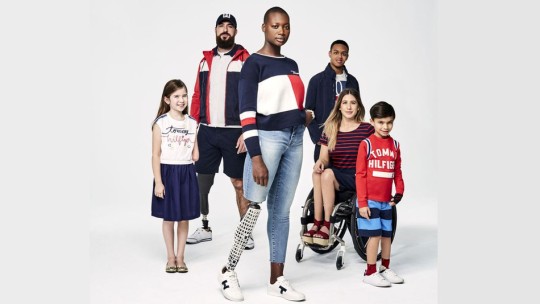
Upon browsing around for brands that are taking the initiative within this sector, I stumbled across efforts being made by Tommy Hilfiger to combat this problem. With their Tommy Adaptive line of clothing, Tommy Hilfiger attempts to provide individuals with brand-specific essentials reimagined to fit the needs of those that are not always considered alongside the masses. In a video produced by HBO, brand designer Tommy Hilfiger shared how he has raised children with disabilities, and how dressing them proved to be a day-to-day struggle that was not made easy from a lack of options when it came to accommodations. Through a design process that involved designers working with individuals with individuals with disabilities, clothing modifications ranging from magnetic closure, one-handed zippers, and tagless garments were pushed out, with a new collection just this past Spring. These articles of clothing are practically indistinguishable from other brand offerings, and that’s exactly how they should be. In order for us all to fit into Addams’ “juster human relations,” we need to be given opportunities to blend in with others, and when clothing is not made in ways that fit the same way across the board, then some feel out-of-place and disregarded.
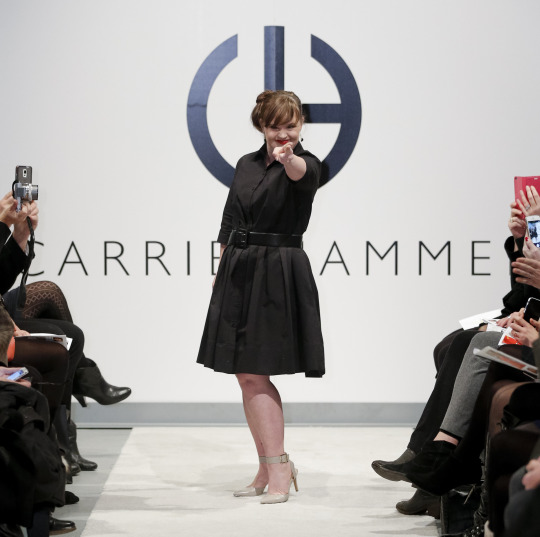
There are a few other brands I’d like to draw attention to that are putting together great collections within this sector. Carrie Hammer, a New York womenswear label, casted Jamie Brewer, an actress with down syndrome known for her roles in American Horror Story, in their New York Fashion week show, which was the first time a casting included an individual with down syndrome. Another casting choice that is different, yet worth mentioning, is that of Slick Woods by Savage X Fenty, where she walked the FW 2018 show nine months pregnant, which coincidentally induced her labor. Allowing groups of people who may have never given the chance to walk a runway is a baby step towards accurate representation within the fashion industry, but it’s one that must not be overlooked.
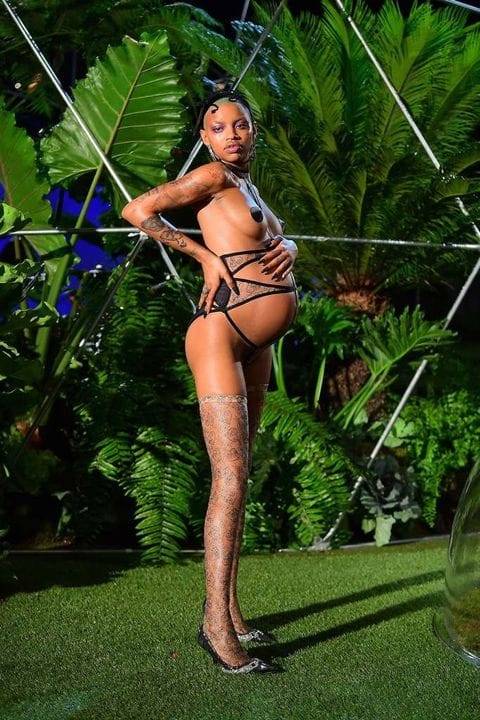
0 notes
Text
Not sold just yet?
As with most other social changes, they do not happen overnight. With an issue like diversity on fashion runways, this is even more true. Fashion shows take place all throughout the year, but main labels show twice a year, and so for the largest and most impactful examples to be made, consistent efforts placing people of all different colors, sizes, abilities, and all other aspects must be made. To emphasize this, I compiled an around 2.5-hour playlist of videos that I’ve come across in the past week that emphasize both shows doing well in casting diversely as well as talks that help push different perspectives on some well-known but not mainstream media models. I personally find conversation on this topic to be incredibly interesting, but I can recognize that not everyone would enjoy this. So, this playlist will help to bridge the gap between discussion and easy-to-digest runway shows. To some, clothes are clothes, and I get that. But, most clothing trends come from runway transgressions, and so every impression counts, especially if they come from a semi-educated (to toot my own horn) perspective. Enjoy as much as you can, and continue to check back as I’ll be adding to this on a frequent basis.
0 notes
Text
Existing Data on Existing, but Not being Seen (on a runway/ad, at least)
There is never an off-season for advertising. Whether this advertising be on billboards, on the radio, or in unconventional-yet-relevant communication methods, people are always out there, looking for something new. While it may not immediately seem to be advertising, runway shows are just that: way’s for fashion insiders and the public to gain insight into upcoming possible purchases and trends for the future. One trend that is on the rise within this sector? Diversity, and it’s about damn time.
Published in March of 2018, The Fashion Spot produced a report stating various diversity statistics from the previous Fall’s Fashion Weeks. Comparing runway appearances to target markets is not the most straightforward process, specifically because in my opinion, I don’t think that labels should solely show those that repeatedly purchase their products on their runways or in their other advertising methods. This ties into the lack of representation and white-washing that is seen in just about every field of media today, and how from a consumer’s perspective, not seeing themselves represented in advertising may just be the reason that they are not purchasing certain products. This report sampled diversity categories such as race, size, transgender/non-binary, and age. It broke down the top 12 models of the season, and told of how half of those 12 were models of color. While this may seem to be a great step in the right direction, this group did not include any transgender, plus-sized, or mature models. So clearly, there is still work to be done.
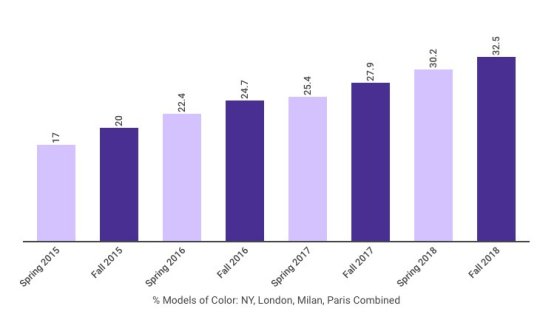
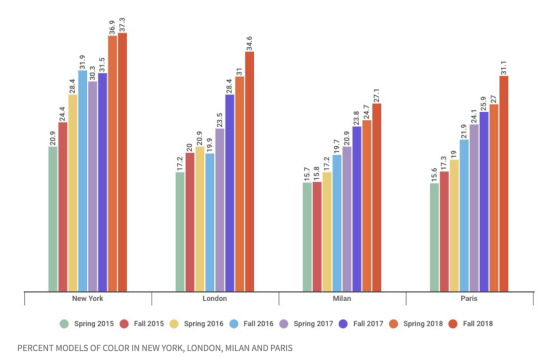
Immediately finishing this report, I thought that while this report is helping broadcast positive changes occurring (it was the first link to appear upon searching “runway diversity reports”), that certain groups are still not even being considered within articles like this. My last blog post was in reference to models with disabilities, and while I saw the article I read to be to be a great step in the right direction, I couldn’t seem to find many more examples of ability-inclusive castings. All other articles (like this or this) were about the same examples I had seen the last time I searched, so perhaps I didn’t see them mentioned in the Fashion Spot report because there weren’t castings to report upon in the first place. This simply does not make sense, and again only limits the scope of business these brands can reach.
For runway shows to be the most effective they could be, I feel as though they should as closely as possible mirror population data. Again, this is difficult when considering models, because the main four showing locations are New York, London, Milan, and Paris. Clearly, these places are going to have different population makeups, and so for truly successful casting diversity, some type of conglomeration data would need to be calculated and published by an authoritative organization within the industry. I could see the Council of Fashion Designers of America (CFDA) doing so, because they are the organization that not only hosts the yearly Fashion Awards, but also owns the Fashion Calendar that all labels traditionally show in.
Along the lines of important voices within the industry, this past year included one of the most progressive appointments in the industry, that being Virgil Abloh, an African American designer, to the position of menswear artistic director for Louis Vuitton, a first for the staple luxury brand. While this appointment was a milestone for minority creatives, it caused quite the controversy. Virgil’s own brand, Off-White, has been heavily criticized for not giving credit to his inspirations in the past, as well as the true merit of his work, due to the fact that it is primarily based on irony. Despite this conversation, it still goes to show that when a wrench is thrown into the system, everyone feels the need to share their opinions. Personally, I see this as a power move by the brand to not only further their power status, but also provide the support for those within the industry to take risks and believe in their craft.
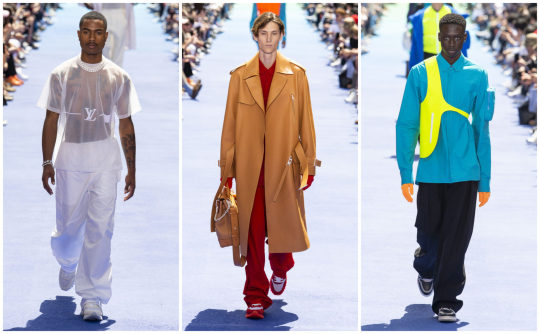
(above is work from Abloh’s debut collection at LV, with themes of empowerment embodied with street silhouettes, staple monogram bags, and Wizard of Oz imagery)
Appointments such as this allow for creatives to place those they would like to see in their collections onto the runways and into other campaigns to share with the world. To see more of these statistics rise, based on collaborative work between those that should be seen on the runways of the world that aren’t quite there would be incredibly beneficial for all. Clothing is a way for individuals to be find confidence in their everyday lives, and just about all styles and trends trickle down from luxury designers. So, to ensure this saturation of progress, casting directors and labels together must work to diminish the systemic white-washing within the industry.
0 notes
Text
On the Topic of Runways and Ads, Why are Some of Us Off of Them?
Runway shows speak a lot into not only the creative visions of those that work at fashion labels, but also their progressiveness. This past week, I came across a Teen Vogue article detailing three models with disabilities, and how they are slowly gaining visibility throughout the modeling world. Written by Keah Brown, a writer with cerebral palsy, this article details the lives of Mama Cax, who models, blogs, and advocates for those with disabilities; Jillian Mercado, a model with spastic muscular dystrophy; and Chelsea Werner, a gymnast/model with Down syndrome. These three women were photographed for a campaign called “The New Faces of Fashion,” and this article was written for the purpose of showing how erasure of any minority group within advertising/modeling causes detrimental alienating effects on those within minority groups.
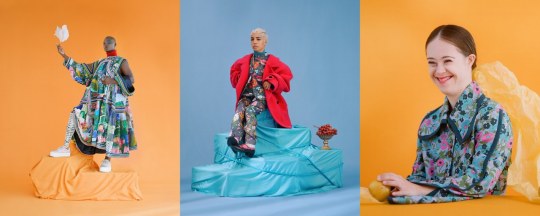
This article discussed how campaigns from Aerie, Tommy Adaptive, ASOS, H&M, and many more are starting to realize that diversity does not simply exist within the sphere of race, sexuality, or gender, but also in relation to able-bodiedness, and how presenting members of society with disabilities in campaigns is a step in the right direction in representation. One of the aforementioned labels, that being Tommy Hilfiger, realized that in order to include models with disabilities, labels must consider these individuals when designers are doing the actual clothing design. Unfortunately, models with disabilities are sometimes presented in clothing that wasn’t designed with consideration of their disability. This can lead to discomfort as well as a general lacking of aesthetic appeal because, at the end of the day, each and every one of us have differently-shaped bodies. Just as someone who is 6’2” would wear a different size pants than someone that is 4’7”, someone who utilizes a wheelchair in every-day life may need garments that differ in functionality than someone who does not utilize a chair. Tommy Hilfiger has created an adaptive clothing label, named Tommy Adaptive, which was designed through collaborative processes with both fashion designers as well as community members with disabilities.
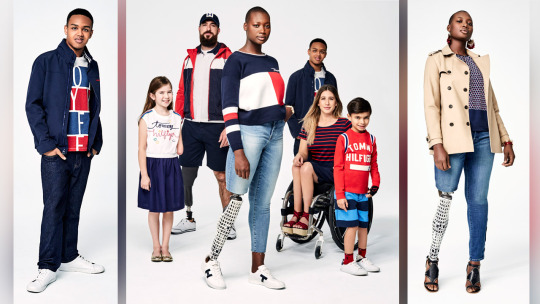
This is not the only accommodation that must be made in order to fully show the diversity that makes this world the beautiful place it is. When it comes to the actual production of a photoshoot, a casting, etc., planners must consult with these models/their agents in order to hold these productions in areas in which those with disabilities will be able to access them. This past semester, I was able to write a paper on runway/campaign model diversity for a persuasive writing class, and one of the more seemingly obvious accommodations that must be made (but typically aren’t) is that of hiring knowledgeable hair and makeup artists to work with a diverse cast of models. Many models of color gave testament to the fact that they would show up to a set, only to be sat down in the makeup chair and be told that that artist did not have the supplies to work with their skin tone or their hair texture. This truly baffles me, as things such as this reveal “professionals” working behind-the-scenes at multi-million-dollar companies to have very narrow vision/consideration for those they want to have support their brands.
The most powerful part of this article was the conclusion, in which Brown stated how these models are beginning to turn the tables and be the ones to say “no” when they are not appropriately accommodated for, where in the past, the models themselves were the ones receiving these “no’s.” There have been many positive displays of this inclusivity as of late, and it shows just how seriously people are finally taking diversity. Preaching and practicing are equal parts of the battle, and empty promises are so frequent in the mass media, that with something as seemingly simple as putting individuals in a photoshoot or on a runway, its shocking that it has taken this long to see more progress. But, instead of saying more about this, I think the most powerful way to go about this topic is to see inclusivity in action. So, here are some of my favorite campaigns/shows as of late that do just what labels should have been doing all along, whether that be in relation to able-bodiedness or other diversity factor.
youtube
youtube
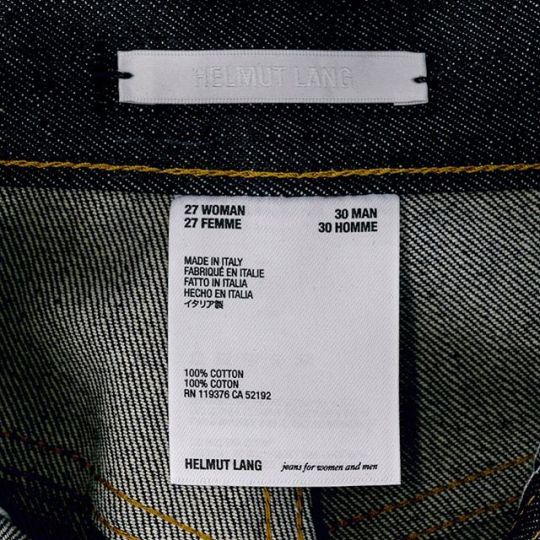
0 notes
Text
Making Criticism into Criticismonade
Typical of any media examining controversial, private topics, Beyoncé’s visual album Lemonade is no exception. With such power to release just about any content that she wants, Beyoncé delves into issues with her spouse’s infidelity, and how this singular infraction fits as a piece into the typical oppression of the black woman in the United States of America today. This visual album is filled with imagery intended to empower women to realize having men in their lives isn’t paramount to success. It leads viewers through a journey of the emotions felt throughout coping with a case of cheating. This film has been criticized in a way in which Beyoncé’s feministic identification has been questioned, due to the capitalistic nature of the release of this visual album. She has also been criticized for subjecting younger women to both sexual and oppressive content through the visual album. I argue that Beyoncé is held to such a standard in her creative endeavors that regardless of criticism that she receives, she works incredibly hard to create depictions of life that are not common, allowing a beginning of understanding to be started.
The parts of Lemonade that stuck with me the most had to be the portions in which footage of black women accompanied by Malcolm X’s voice discussing the oppression of the black woman as well as diverse couples were shown. I found that this depiction was the most genuine and raw footage of the visual album. Sure, portions in which Beyoncé showed anger towards the actions of her husband were very powerful, but they were also staged. The true footage of people loving one another, and that showing black women in their element was really powerful and fits well into Beyoncé’s feministic ideology.
On the topic of this visual album being criticized for its capitalistic nature, I have one point to make: it is a piece of artistic creation. Every painting out there isn’t just given away for free; this film, despite it including themes that empower those who may fit in with the groups discussed in the film, is no exception to this model. Sure, Beyoncé is incredibly rich. She would not be that way if she did not release powerful content, content like this. I find the criticism of her feminism based on such premises to be hypocritical, in that she is a woman who is using her platform to make known the struggles of a group of people, and that she also, belonging to an oppressed gender/race, is able to make money in this field doing so. I just see criticisms of this, such as that of Bell Hooks, to be counterintuitive. Sure, I see how she could make the argument that empowering material such as this should be widely accessibly, but at the end of the day, Beyoncé is a business woman. If she is going to put this much effort and emotion into a project, she deserves to make some money off it!
And on the topic of this visual album subjecting young women to sexual/oppressive content, I think that this criticism is a lazy one. Practically all content in today’s media environment is made in a misogynistic manner, and so I don’t see how content coming from such a source as Beyoncé could be seen as this, and not as a woman doing what she pleases, as it is her right to do so.
I think that the commentary following this project was bound to happen, and that with most media such as this, created by such a powerhouse, is inevitably going to be dragged over the coals for doing things that most other content won’t. All in all, I though Lemonade was great.
youtube
(Above is one fan’s reaction towards the visual album)
0 notes
Text
Life Is Not All It’s Crocked Out To Be
Being and having been an avid YouTube viewer since the network’s creation in 2005, I really enjoyed watching this documentary. From first hearing the title, I wondered how the first YouTube video was going to be tied into the background life of Chris Crocker, but now I think I have a pretty good understanding of the metaphor they were attempting to make. Chris Crocker’s life was as unpredictable and wild as some of the animals in a zoo, and Internet fame only pushed that wildness to its limits. While some may say that Crocker’s internet habits caused him to go off the deep end, I argue that this is an example of someone using their celebrity platform to experiment with sides of themselves they’ve never been able to, while also staying true to certain traits.
Crocker’s most known “claim to fame” is his “Leave Britney Alone” video, in which he begs paparazzi and other celebrity news workers to allow Britney Spears, Crocker’s greatest passion, to deal with her issues as privately as a celebrity of her caliber can. In the film, he talks about how a trait of his is to help and protect people. Seeing that Britney Spears is one of the most important people in his life, despite the fact that he does not personally know her, it makes sense he’d attempt to help her during times of struggle. During the time Crocker was in LA to possibly receive an MTV show, he definitely portrayed a more wild side than he had in the past. Despite these actions that may have seemed brash, he still was just sticking to his exhibitionist nature. Internet fame didn’t change Crocker’s behavior, it publicized it.
And this goes alongside his desire to protect people. Crocker was raised by his grandparents because his mother had him in her mid-teenage years. This led to Crocker not always knowing what her mother was doing in life, and during the documentary it was disclosed to the audience that she had issues with using crystal meth. Crocker, and to an extent his grandparents, offered help to his mother. She was struggling with an addiction that clearly was leading to a disconnect between her parents and her son, and it definitely had to do with Crocker’s obsession with Spears. He saw his mother in her, and since she was in the public eye, he was able to personify his mother into Spears and follow her public actions as much he was able to. Crocker was an obsessed fan, but it was his coping mechanism for having an absent mother.
This absence caused Crocker to be in situations in which a gender fluid person as he is were not always the most beneficial for him. His grandmother was much more relaxed in her opinions toward Crocker’s gender portrayal exploration, but she still was judgmental due to the fact that they lived in such a rural area, where diversity is not too common. Crocker’s grandfather, on the other hand, was told to be much more outwardly judgmental towards him. At one point in the documentary, Crocker is filming himself with his grandmother dressed in typically-feminine clothing, and commenting on how angry his grandfather would be if he saw Crocker dressed as he was. This type of living environment can be incredibly toxic (no pun intended) towards a child’s development, which causes them to turn to celebrities like Spears for outlets and acceptance. Family figures, not public figures, should be doing this.
In an ever-diversifying world that we live in, publication of stories like this are imperative towards getting examples out into the world of the many ways people self-identify. This helps those who are struggling to understand their development, especially if they are realizing they do not fit into the stereotypical mold that we have created over time, and thankfully are starting to break apart. Crocker has since commented on his internet actions, and the point has been made that this was the first time a fan gained fame off of said fandom. The life of internet stars may seem to be all out on the internet for all to see, but there is still so much occurring behind the camera that this documentary was eye opening and a great way to target such a huge audience by relating raw and relatable issues through a recognizable person in the public eye.
youtube
(Above is the video Chris Crocker’s fame surrounds, involving him defending Britney Spear’s actions during a troublesome 2007)
0 notes
Text
Shook by a Book
This conference was very eye opening for me. I have definitely dabbled in comic book reading in my days, but never anything too intellectual. I was huge into reading when I was younger, but stopped due to being an annoying teenager. Nowadays, I’ve found myself returning to pretty frequent reading, and I’ve been looking for new types of books to read to keep myself interested. The visual aspect of graphic literature is a whole new playing field, and I would love to return to that nostalgic child-like mindset through reading visual novels, especially since I now am more aware of things to look for besides action-packed illustrations. I argue that active reading habits would cause a change of perspective about new media that are typically considered to be “too childish” or “unintelligent.”
The topic of mindset widening towards different methods of information-gathering got me thinking. This stuck with me because I find the concept of using different methods of reaching people who may not get the same information out of certain books or films helps to diversify learning options for those who may think differently. I remember taking learning-style quizzes in elementary, and I tested high in visual learning, so I can definitely see this being beneficial for those who do not do well with auditory or hands-on learning. I think that learning options allow for the best results, and would help those who typically wouldn’t pick up a book to continue learning in the way that they prefer to do it. This consumption of choice media would help to foster active reading habits, which would improve the content quality of mass media.
Another topic that stuck with me was when one of the panelists brought up the concept of not knowing whether or not a dog on the street wants to be pet or not. Humans do not typically consider this animal consent, and as a dog lover, I never thought of this point of view. I can definitely attest to having days in which I want nothing to do with other people, let alone be touched by people I know or strangers. I think that the aforementioned active consumption of media out of the normal sphere of influence would allow for more widespread passing of ideologies such as this one. I’m sure that a lot of the issues the world is faced with on a day to day basis are issues due to lack of information from those involved in situations. With more accurate representations in the point of view of those affected would cause a lot of issues to be brought to the surface and receive resolution.
With this, I think that the judgment that comes along with certain media consumption would be significantly lessened if more diversification of media existed. Sure, I can’t imagine a businesswoman on Wall Street picking up a graphic novel to get her daily intake of news on the way to work, but you never know. I think that less judgment in this area, even of the characters involved in some fictional media, would allow for more people to enjoy different media, and would help the process of differentiated media develop.
People should not feel ashamed to read something that they enjoy or something that helps information resonate with them the most just because that media might typically be associated with a group of people they would not want to be grouped into. I find that so many people worry too much what they do in public, and I think that if more and more people did what they were comfortable with, societal norms would adjust in a way that people would feel more comfortable to be their true selves. There are many ways to do this, and I’m sure it would take a long time to get to the point where this lack of judgment would be widespread, but I truly think that active media consumption would allow for people to gain much more worldly viewpoints and become accustomed to experiencing lifestyles different for theirs. Differences are what make people interesting, and stifling of this differentiation is unfortunate. Movement towards a more accepting world is occurring, but public steps must continue to be made, or else we will backslide into a world of oppression. So, read your comics, look at picture books, or anything in between. At the end of the day, if you’ve received the message, that medium has done its job.
youtube
(Here’s a YouTuber’s opinions on book/genre shaming)
0 notes
Text
Miss-ing the Mark
The documentary Miss Representation tells of the internal struggle women suffer when practically all media exposure feeds into a subliminal message of how being skinny and sexual is the only way to succeed or be talked about in a patriarchal society. It gives countless accounts and examples of professional women that, regardless of merit in the working world, still get overlooked for such positive attributes and dumbed down into an objectification. I have a hard time with coming up with an argument relevant to this topic as I am male, but there were many viewpoints that made me consider things that I haven’t in the past. I argue that, like Pat Mitchell says towards the end of the documentary, women should utilize their majority population standing and purchasing power to come together and boycott certain media or only support positive that would lead to a change in the depiction of women.
To start, the documentary depicts a scenario in which multiple teenage girls are discussing common issues they/their family members face that lead to changes in personal appearance. Ariella, a high school student, mentions the ideal of the “perfect woman”, and how any straying from that ideal causes women to feel they need to conform. This ideal is primarily male-generated, and so just through that fact it is telling that it would not be realistic. Men hold the majority of positions of power within media markets, and so when representations of women are constructed, they’re bound to be incorrect due to bias. These teenage girls told of scrutinization from other teens to eat more or to lose weight, and in order to feel better, they would do things like straighten their hair, pile on the makeup, throw up after eating, or even cutting themselves. These are teenage girls, attempting to meet standards that aren’t even typically thought of for people of their age. And the media does nothing but support these standards.
One of those teenage girls breaks into tears, wondering when someone behind the depiction of women in the media will take a stand, which is precisely what I argue that someone should do. The following sequence in the documentary shows how a simple headshot of a model, no matter her natural beauty, undergoes heavy manipulation into what is considered an “acceptable” final product used on billboards. This image is nowhere close to the genuine image of the women depicted, yet those who view this billboard are conditioned to think that this is a real photo of a real woman. And so, this feeds into the subconscious cycle of women viewing ads of “perfect women”, then attempting to manipulate their image to match. Representations of diverse bodies would cause great change in this complicated field of concern.
Miss Representation then shows examples of depictions of women who are partly empowered, and a lot of them are women in lead roles in film. Despite these roles, they are still portrayed in very sexualized ways to not only cater to the “female empowerment” side, but also the “male objectified” side. This half-effort must be pushed aside to give the world a true feminist protagonist. Without this, the cycle of misrepresentation will continue.
This is a great link to a recent ad campaign I saw by skincare brand Glossier. They featured one of my favorite models, Paloma Elsesser, in a revealing shoot of her. This may seem controversial to my point at first, but Elsesser is what is to be considered a “plus-size” model. She posted on social media during the campaign about how initially hard it was for her to come to terms with this campaign, but how the turnout is unparalleled in empowerment she has felt.
These are the type of campaigns that will bring around the depiction of women to what they should be: realistic! It should not have to be something so extensively worried about, but that is the world that we live in. I think that the progression that has taken place to which aforementioned campaigns are becoming more common is a path we should continue to move down. But, the key to this is consistency, and we cannot allow for a backslide in this fight for equal and accurate representation for all human beings. Without this, we will forever live in a world of inequality.
youtube
(Here’s a great video concerning female body positivity I found on YouTube)
0 notes
Text
Clash of the Classes
I wouldn’t call myself a TV person nowadays, but I used to spend countless hours on the couch of my parents’ house taking in episode after episode of a wide variety of shows. Being in classes that delve into the deeper meanings of societal issues referenced in shows makes me much more interested in returning to frequent TV viewership to view these representations for myself. Since, in my prime TV-watching days, I wasn’t watching the shows referenced in Class Dismissed, I found this documentary to be very enlightening into different ideologies concerning working class (mis)representation in some of what are considered to be quintessential sitcom television shows. I argue that we shouldn’t have to be so worried about the stigma behind discussing class status by discretely referencing social class stratification through specifically designed TV characters, although they are great tools to initiate conversations that wouldn’t occur without them.
To start, a discussion of this stigma would be beneficial. As was stated in the documentary, conservatives, who are very frequently the higher-ups in companies which cause the continuation of a minority-heavy working class, commonly shut down any type of conversation dealing with economic injustice by calling it “class warfare.” When people do the wrong thing, odds are they know that they are breaking some moral deep down inside themselves. Does that keep them from doing it? No. But, the discussion of said wrong-doing in a public setting to cause its end is what won’t be tolerated, (at least until it is backed with enough force that one must allow for discussion). I see this fear of “sticking up to the man” is what perpetuates the representation and proper treatment of the working class. Due to this fear, smart and relatively untraceable jabs must be taken.
This secretive nature to class standing carried over into TV shows, with one, that being Amos & Andy, standing out significantly to me. A clip was shown in which a woman was asking her husband for a new dining room furniture set as to seem more sophisticated, which would garner her the ability to have more civilized company over to her house, which would give her more social capital, and this upward mobility cycle would continue based on one purchase. This attempt of hiding true economic status by depicting oneself as more affluent than reality is the perfect example of this attempt to merge within the middle class “majority”, and break away from the “uncivilized” likes of those who hold labor jobs. Those working these jobs often work in more stressful and dangerous situations than those making astronomically more money in offices telling others what to do. But again, discussing this abnormal balance of power and monetary compensation is just unheard of. Too many people fear discussing social class in fear that their status might lessen how others would view them.
In most of the shows that were featured in Class Dismissed, mobility was shown as if working class work is something that everyone will work their way out of. That’s simply not true. It told of Chico and the Man and The George Lopez Show being two of the most prevalent depictions of working class characters. Proportionally, the amount of shows focused on people, minorities and majority-members, of different class statuses are not accurate. I see this being possibly detrimental to those in the working class, in that they see other lifestyles as the “end goal”, and that they shouldn’t be content in their current situations. Every job out there needs to get done, so the viewing of specific jobs as lesser simply because they may include some dirt is ridiculous. Often those jobs are much more dangerous than most, and so compensation for said danger is necessary. I feel as though more depiction of working class characters would provide a reassuring statement (not like one is specifically necessary) that labor work is not only acceptable, but commendable.
This documentary helped me reevaluate television and how I’ve missed out on what are so essential to some people’s lives. I may not look to television for representation, but many people out there do. They should see those similar to themselves, or else they may feel alienated.
youtube
On a lighter note, here is an ASMR video catered to the needs of a member of the working class.
0 notes
Text
Fame Game
Sport culture is so ingrained into today’s society that a lot of the brutal and exclusive ways of sports’ pasts are often overlooked. I found Not Just a Game to be incredibly interesting based off one main point: the host, Dave Zirin, is still able to call himself a huge sport fan after recognizing so many problems with the infrastructure behind them. A lot of themes that the film brought light to were pretty shocking, yet the tone of the documentary still seemed celebratory. I argue that sport culture, while it plays a very important role in modern-day commercialism, causes significant underlying detriment that most typically don’t pick up.
To start, I thought the portion of the documentary that showed sports-related injuries was alarming. I specifically remember them stating that playing professional football is like “skipping middle age”, because of all the injury that is associated with such a violent sport. Statistics were even shared stating that professional football players on average live 20 years less than those that don’t play. I find this incredibly alarming, in that United States citizens put so much power behind the “act tough and don’t let pain stop you from entertaining” mentality that sports, especially football, thrive on. It’s scary to think that the one football player featured in the documentary said that he’d “do it all again” if he was able to, when it seemed as though he had his leg amputated due to playing the sport. You would think that such a significant injury would cause one to avoid that activity, but that is the tough attitude that people who play football uphold for the money.
Which brings me into the next topic that really stood out in the documentary to me, which was the story of Pat Tillman, and how different it was to actions LeBron James took. Pat Tillman, regardless of losing his life while serving his country due to friendly fire, still put aside his career as a professional athlete in exchange for the ability to serve his country selflessly. Sure, he ended up not supporting the violence associated with war, but he still turned down immense wealth associated with professional football playing. This selflessness was just about the polar opposite of the actions of LeBron James when he dawned an American flag (while already wearing incredible patriotic garments) to cover up the Reebok logo emblazoned on his jacket in order to protect his standing with competing athletic brand Nike. What may have seemed to be a patriotic statement was solely him selling out in order to continue making loads of money through a sponsorship. Supporting such selflessness through using an important national symbol, in my opinion, should never be celebrated. The celebration of Pat Tillman should be much more in the public eye, and not in support of sports and war but in support of how he truly disagreed with violence.
Finally, I find professional sports to be such flawed systems in that they were founded in incredibly exclusive ways. The documentary showed how Boston Marathon officials attempted to physically remove the first woman to run in the race solely based on her being a women, how certain male athletes were so openly homophobic, and how certain African American men weren’t taken as seriously as role models due to the color of their skin. I find that so many institutions behind sports disregard the fact that they are profiting off of using people solely to drive up sales or exposure. I think that sports could be great tools to keep people active and healthy, but so many of the athletes are pushed to disregard their physical health to reach extreme levels of physicality that they themselves perpetuate this pattern of poor health.
Sport culture should definitely not be celebrated in the way that it is today in modern society. I think that so many unhealthy and negative lifestyles are birthed through the celebration of organized violence that occurs on a playing field. I find it hard to believe that so many parents not only allow, but encourage their children to participate and become fans of sports, where I’m sure they would also advocate for their children to be against violence and objectification of people. At the end of the day, the higher-ups in the sport world do not care whether or not their athletes are happy or healthy, they care about the profit. It seems apparent, but clearly is quite the opposite.
youtube
(View this video at your own risk, since it entails very graphic sporting injuries.)
0 notes
Text
Fickle Fame
It’s safe to say that most people in the world would enjoy at least a small amount of fame. Who wouldn’t appreciate all that love, even from complete strangers? Fame is occasionally utilized for good reasons, like to raise money for charity, but also goes to the heads of many celebrities. The documentary Generation Like brought attention to some of the lengths that people will go to just to gain internet fame. Three examples in which people start to let certain morals lax to gain said stardom really stuck out to me while watching the documentary. I argue that while some “internet famous” people utilize this status well, most online celebrities do not employ their fame well or desire to gain a level of public familiarity for societally-beneficial reasons.
To start with the tamest example of lack of utilization of status found in this documentary, I want to discuss Ceili Lynch. She was shown to be a Hunger Games super-fan, who devoted hours every day towards attaining high-ranking status among the film’s official fan page. To attain this, she would post different Hunger Games media on her Tumblr and Twitter accounts to gain currency attributing to her “fan rank”. She even told Rushkoff, the documentary’s host, during their interview that she sometimes spent around five hours at a time sharing links and other info, to the point where her hands hurt. Plain and simple, she was advertising for the Hunger Games without monetary compensation. She could have used this platform she attained through her love of the series to grow financially, but instead got no true reimbursement for all the work she did to integrate the series into the public eye. She used her agency as a super-fan to gain a following and interact with the films’ actors, but lacked the understanding of her situation to realize she could have profited from it.
The next example is less tame. Daniella Diaz seemed to be generally innocent, in that the documentary showed her posting videos of herself singing onto the internet and gaining fame alongside this through Instagram posts. Where the issue arrises is when her mother starts to talk about how she helps her daughter take the pictures, and how the pictures that depict more of her daughter’s body get much more recognition than others just depicting her face. She did not seem even the least bit perturbed by this, which was quite alarming to me. It’s clear that morals regarding exploitation of the female body, especially in minors, are dropping solely for the achievement of internet fame. Diaz was in 8th grade when the documentary was released, meaning she was nowhere close to the legal age of consent. Being encouraged by such a strong authority figure as her mom to reveal more of her body online for social capital is not morally right and quite demeaning.
Demeaning imagery, especially of women, is at the core of the third example that Generation Like made evident to me. Steven Hernandez, who originally grew his internet fame from posting skateboarding videos in the hopes to make money for his impoverished family living in Compton, California, eventually realized that he could gain more viewership for posting other content. Unfortunately, that content was at the expense of bystanders. He moved the subject of his videos to public pranks, a popular Youtube video genre sometimes taken too far, in which some cases he would sexually assault women. Clearly the thought of protecting his online “Baby Scumbag” nickname got to his head, and the fame did nothing but inflate his ego to make him believe he could do whatever he pleased without consideration of those he terrorized.
So, as Generation Like exemplified, fickle fame that is sparked through internet posting commonly turns out to be detrimental to the celebrities but also to the public. Some internet personalities utilize their public platforms to spread good, but in a lot of cases, people do not realize the scope of what this position entails.
youtube
(Here’s an example of a surprising, yet harmless public prank that earned someone momentary internet fame)
0 notes